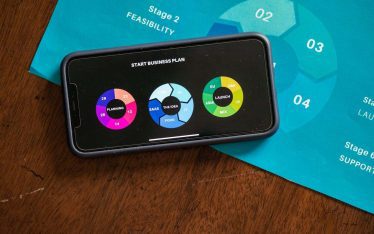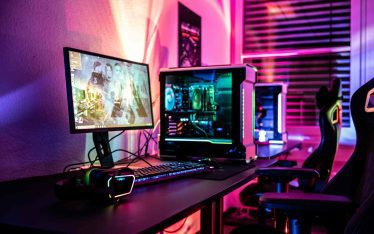A cardiovascular patient had a tiny wearable device implanted somewhere into his body. At some moment invasion is started. The patient does not notice the onset of an irregular heartbeat or a slight cold sweat, or other minor symptoms. But the sensor has already sent an alert to the mobile application and the app’s connected with a doctor or healthcare facility. This is not a fantasy, such approach is used more and more.
Another not so trivial case for using wireless technology is automated emergency calls. If someone had felt bad, they could just dial 911 and wait. A phone automatically turns on its location capabilities, pings nearby Bluetooth beacon signals and can determine the location down to the room number, floor number, and physical address, and automatically sends that information to the closest hospital emergency facility.
As a matter of fact the Federal Communications Commission (USA) estimates that indoor localization technology could save up to 10,000 lives per year.
We’ve reviewed just two specific cases of BLE usage in the medical branch. And more often now, wireless technologies are finding themselves in useful medical applications. The following sections provide a short review of Bluetooth applications in the medical industry.
Healthcare Cases
Healthcare is one of the biggest areas of the Internet of Things (IoT) where Bluetooth Low Energy is widely applied. The most popular is the individual health metrics collection branch. It has become possible thanks to three basic properties: the specific characteristics of BLE chipsets, the popularity of smartphones and the affordability factor.
BLE microcontrollers are small and very energy efficient. It allows vendors to design tiny devices like fitness trackers that can work for months or years on a tiny battery. Bluetooth smart technology is supported by almost all smartphone brands. Now it is enough for users to buy a relatively cheap wearable device and be able to track some basic parameters of their health.
Also, Bluetooth has found a place in several other health care industry cases such as:
- Personal usage
- Personal health assistants
- Connected home health
- Remote health monitoring of a person
- Tracking mobile medical equipment
- Tracking pharmaceuticals
- Improve ROI and efficiency of certain hospitals
Personal Health Assistants
The ability to track health has already been presented in the numerous popular devices such activity monitors, smart watches, smart clothing, patches and multi-sensor bracelets. These monitoring devices can track:
- tracking pulse
- sleep activity
- level of attention
- quality of sleep
- pulse
- body temperature
- daily activities,
- ECG
- cardiac fitness
- stress levels (by checking electro dermatic activities)
Some of these parameters could be measured by popular fitness trackers or similar devices. Others could be bought for a relatively small amount of money (blood pressure assistant, glucose meters, heart rate monitors, asthma inhalers, weight scales etc).
The most important part of this section is to choose the most appropriate device for the situation. This choice is not too easy, because there are both good and bad devices, spare parts, time of autonomous work, user interfaces and many other things that matter. The most famous producers of wearable devices that could be applied in healthcare are Fitbit, Philips Healthcare, Garmin, LifeWatch, Omron Healthcare, Drägerwerk, Withings, Jawbone and Polar Electro. And, perhaps this futuristic experience could be helpful.
A large number of personal health assistants were able to be developed because the BLE specification provides a special profile for certain types of medical devices (Blood Pressure Monitor, Body Composition Analyzer, Body Thermometer, etc. – totally 28 types of devices). During the early stages of BLE development the transmission of medical data via Bluetooth was not standardized. Device manufacturers developed their own data protocol that was not compatible with other protocols. For unification, the association of Bluetooth manufacturers (SIG) developed and published the Health Device Profile in 2008.
As a result, the global wearable medical devices market is growing fast. For the next six years it is predicted to grow by a factor of 2.2 times. At the end of 2016 it is estimated to become a 5.31 billion USD industry, and this figure could even reach 12.14 Billion USD by 2021.
Connected Home Health
Connected home health extends Personal health assistant direction. This use case suggests to connect all medical electronics in your home to a single system. Additionally, some specific devices could be used to clarify specific body parameters.
The main task of this system is to track a patient’s overall health. In case of impairment the system sends a signal to the patient’s personal health care provider.
No Doctor-Patient Eye Contact
This use case could be applied by patients after they go home from the hospital. Their state could be monitored remotely using biotelemetry. Biotelemetry has become possible after increasing usage of mobile devices. A pair of smartphones with a medical app + wrist band monitor (or blood pressure monitor) enables the ability to inform a doctor directly about the state of a patient’s health over a period of time. It can help make a proper diagnosis, and assist in the treatment of diseases without doctor-patient eye contact.
A doctor can use common desktop/mobile application or specific devices like smart glasses or head-mounted devices. These tools give clinicians access to medical records, patient vital signs or medical instructions right in their fields of view, so they don’t have to look away from their patients to search for information using a keyboard. There are companies (like Gobio or Global telehealth service) that are already providing remote patient monitoring services.
To be Sure in Pharmaceuticals
What is needed here is to just affix a Bluetooth asset tag on a box of pharmaceuticals. The tags interact with BLE beacons installed throughout the inside of a hospital. Beacons monitor environmental factors such as temperature and humidity and send data to a server about how long specific medicines have been stored in specific conditions.
A server’s software tracks and displays a history of environmental factors for each package of medicine. This approach is useful to ensure that pharmaceuticals are kept under ideal storage conditions thereby improving shelf life and reducing waste.
Tracking Mobile Medical Equipment
Asset tracking is needed just for keeping track of where various equipment items are located in a hospital. In the healthcare industry equipment changes location quickly and often unexpectedly for staff. A system for location of real time assets is a solution. Such a system not only tracks the assets location, and even recognizes rooms. Thus the system knows which department and perhaps even which person is now using the equipment and can even predict the time left to end of usage. Item tracking can also help ensure that objects are kept clean and ready for use, not to mention the personnel time saved in not having to make calls or run about looking for something that is needed.
Realization is based on server based indoor positioning and tags on tracked items. The tag/beacon advertise their MAC address or UUID. This signal is captured by specific hardware and then transmitted to a server for calculating and gathering statistics. The server approach is good for tracking assets and moving medical equipment in many healthcare settings.
Improve Return On Investment (ROI) and Efficiency
Smart hospital information systems decrease expenses and find new ways to achieve savings in operating costs. Such an approach identifies inefficiencies in the system and removes them. Increased efficiency means less equipment and less staff can accomplish the same amount of work. The ROI that tracking solutions offer is another compelling reason to invest.
In some cases, the benefits of a hospital tracking system can be extremely direct. One of the best examples of this is the facility of tracking systems that prevent retained surgical devices.
Security is a Challenge
As the use of medical BLE devices continues to rise they must be tuned to work as securely as possible. The security problems are well-known for Bluetooth Smart implementations. Some vendors aren’t always implement the bonding and encryption protections that are offered in the BLE standard. Medical devices should always support a very secure end-to-end connection. The devices should periodically generate a new shared key for encrypting data. Today some producers who understand how important it is to develop a secure Bluetooth connection are making use of biometric security. These solutions avoid unauthorized access by using unique personal characteristics, such as fingerprints or facial recognition. The use of these solutions is on the rise in both medical and general security applications.






